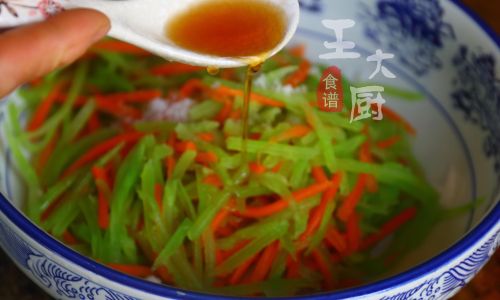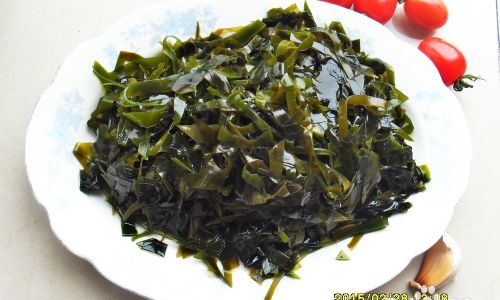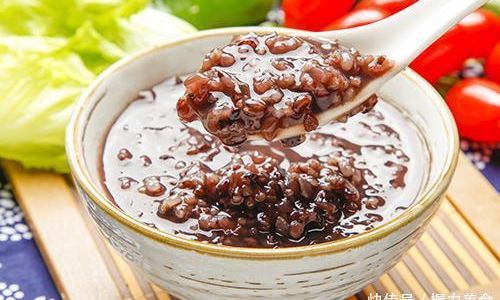Introduction

In the vast realm of culinary delights, few dishes capture the essence of simplicity and freshness quite like a well-crafted seaweed salad. This vibrant, tangy, and nutritious dish has become a staple in many coastal cuisines, where the bounty of the ocean is celebrated in every bite. Fresh seaweed, often overlooked as mere marine vegetation, is actually a treasure trove of minerals, vitamins, and antioxidants, making it a powerhouse ingredient for health-conscious eaters.
In this culinary guide, we will delve into the art of making a delicious fresh seaweed salad. From sourcing and preparing the seaweed to crafting the perfect dressing and adding complementary ingredients, every step will be meticulously detailed to ensure your salad is not only tasty but also a visual delight. Whether you’re a seasoned chef or a home cook eager to experiment, this guide promises to elevate your understanding and appreciation of seaweed salad.
Chapter 1: Understanding Fresh Seaweed
Before diving into the recipe, it’s crucial to understand the different types of seaweed commonly used in salad preparations. The three primary categories are brown algae (such as kelp and wakame), red algae (like nori and dulse), and green algae (such as sea lettuce and ulva). Each type offers a unique texture, flavor, and nutritional profile.
1 Brown Algae
Brown algae are perhaps the most versatile in salad preparations. Kelp, with its thick, leathery leaves, is rich in iodine and other trace minerals. Wakame, on the other hand, has a milder flavor and a tender texture, making it ideal for salads. When choosing brown algae, look for leaves that are dark green to brown in color, with a slightly rubbery texture when fresh.
2 Red Algae
Red algae are often used for their vibrant color and slightly salty, umami-rich flavor. Nori, famously used in sushi wraps, can also be shredded or crumbled into salads for a crunchy texture and a burst of sea flavor. Dulse, with its thin, leafy fronds, is another popular choice, offering a slightly sweet and tangy taste.
3 Green Algae
Green algae, such as sea lettuce, are delicate and tender, with a mild, slightly nutty flavor. They are perfect for salads due to their tender texture and ability to absorb dressing without becoming soggy.

Chapter 2: Sourcing Fresh Seaweed
The quality of your seaweed is paramount to the success of your salad. Here are a few tips for sourcing the freshest seaweed:
1 Local Harvests
If you live near a coastal area, consider sourcing your seaweed locally. Many coastal communities have small-scale seaweed farmers who harvest their crops sustainably. This ensures that your seaweed is not only fresh but also ethically sourced.
2 Specialty Markets
Specialty food markets and health food stores often carry a variety of fresh and dried seaweed. Look for packages that are sealed and labeled with the harvest date. Fresh seaweed should have a clean, oceanic aroma and should not smell fishy or musty.
3 Online Retailers
For those living in inland areas, online retailers offer a wide selection of fresh and dried seaweed. Be sure to read reviews and check the shipping times to ensure that your seaweed arrives fresh.
Chapter 3: Preparing Fresh Seaweed
Once you’ve sourced your seaweed, it’s time to prepare it for the salad. Here’s a step-by-step guide:

1 Rinsing and Cleaning
Start by rinsing your seaweed under cold running water. This helps to remove any sand, salt, or debris that may be present. Be gentle when rinsing, as delicate seaweed can tear easily.
2 Soaking
Soaking seaweed in cold water for about 10-15 minutes helps to soften it and make it more pliable. This step is especially important for thicker varieties like kelp and wakame. Use a bowl large enough to fully submerge the seaweed and change the water if it becomes discolored or murky.
3 Draining and Patting Dry
After soaking, drain the seaweed in a colander and gently pat it dry with paper towels or a clean kitchen towel. Excess water can make your salad soggy, so be thorough in drying.
4 Chopping and Shredding
Depending on the type of seaweed, you may need to chop or shred it into bite-sized pieces. Use a sharp knife for clean cuts and avoid over-handling, as this can bruise the seaweed and release unwanted juices.
Chapter 4: Crafting the Perfect Dressing
The dressing is the soul of any salad, and seaweed salad is no exception. A well-balanced dressing should enhance the natural flavors of the seaweed while adding depth and complexity. Here’s a classic recipe for a seaweed salad dressing:

1 Ingredients
- 3 tablespoons rice vinegar
- 2 tablespoons sesame oil
- 1 tablespoon soy sauce (use low-sodium if preferred)
- 1 teaspoon toasted sesame seeds
- 1 teaspoon sugar or honey (optional, for balance)
- 1 clove garlic, minced (optional, for flavor)
- A pinch of red pepper flakes (optional, for heat)
2 Instructions
- In a small bowl, whisk together the rice vinegar, sesame oil, and soy sauce until well combined.
- Add the toasted sesame seeds, sugar or honey, minced garlic, and red pepper flakes, if using. Stir to incorporate.
- Taste and adjust the seasoning as needed. The dressing should be tangy, slightly sweet, and fragrant with sesame oil.
Chapter 5: Assembling the Salad
Now that your seaweed is prepared and your dressing is ready, it’s time to assemble your salad. Here’s a basic recipe to get you started:
1 Ingredients
- 4 ounces (about 1 cup) prepared fresh seaweed (a mix of brown, red, and green algae for variety)
- Dressing (as per the recipe above)
- 1 small carrot, julienned (for crunch and sweetness)
- 1 small cucumber, seeded and diced (for refreshment)
- 2 tablespoons chopped fresh cilantro or parsley (for garnish)
- 1 tablespoon toasted sesame seeds (for garnish and added crunch)
2 Instructions
- In a large mixing bowl, combine the prepared seaweed, julienned carrot, and diced cucumber.
- Pour the dressing over the seaweed mixture and toss gently to coat all the ingredients evenly. Be careful not to over-mix, as this can break up the seaweed and make the salad mushy.
- Taste and adjust the seasoning if necessary. The salad should be tangy, slightly sweet, and have a nice balance of flavors.
- Garnish with chopped fresh cilantro or parsley and toasted sesame seeds. This not only adds a pop of color but also enhances the overall presentation and flavor of the salad.
Chapter 6: Adding Complementary Ingredients
While the basic recipe is delicious on its own, feel free to experiment with additional ingredients to suit your taste preferences. Here are a few suggestions:
1 Proteins
- Grilled shrimp or tofu: Adds a nice texture contrast and a boost of protein.
- Avocado slices: Creamy and rich, avocado complements the tangy dressing beautifully.
2 Vegetables

- Bell peppers: Add sweetness and crunch.
- Radishes: Their peppery flavor pairs well with the seaweed.
- Edamame: Adds a nutty flavor and additional protein.
3 Herbs and Spices
- Fresh mint or basil: Adds a refreshing note.
- A dash of chili powder or sriracha: For those who like a bit of heat.
Chapter 7: Serving and Storing
1 Serving
Serve your seaweed salad chilled or at room temperature. It pairs wonderfully with grilled meats, sushi, or as a standalone appetizer. For a more elegant presentation, arrange the salad on a bed of lettuce leaves or serve it in individual serving bowls garnished with a sprinkle of sesame seeds and a wedge of lime.
2 Storing
Store any leftover salad in an airtight container in the refrigerator for up to 2 days. Note that the seaweed may become slightly softer over time, so it’s best to enjoy the salad within a day or two of preparation.
Conclusion
Crafting a delicious fresh seaweed salad is a rewarding culinary endeavor that not only satisfies the palate but also nourishes the body. By understanding the different types of seaweed, sourcing them fresh, and preparing them correctly, you’re well on your way to creating a dish that is as visually appealing as it is delicious. The key to a successful seaweed salad lies in the dressing, which should be tangy, slightly




0 comments